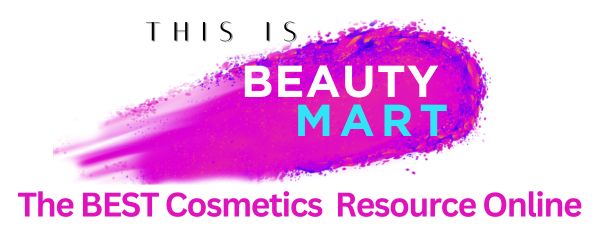Are you curious about non-surgical facelift options and can’t decide between Ultherapy vs Thread Lift? These are modern, minimally invasive cosmetic procedures that offer similar benefits to a traditional facelift without the dreaded needles or scalpel.
This article will delve into the differences and similarities, advantages and disadvantages of these two popular treatments to help you make an informed decision for your facial rejuvenation needs.
Ready to explore? Let’s jump right in!
Key Takeaways
- Ultherapy and thread lifts are non-surgical options for facial rejuvenation and skin tightening.
- Ultherapy uses ultrasound energy to stimulate collagen production, while thread lifts involve inserting dissolvable threads under the skin to lift sagging areas.
- Both procedures offer long-lasting results, but there are differences in method of lifting, degree of lifting, skin quality improvement, and duration of effects.
- The choice between Ultherapy and a thread lift depends on individual needs and goals, as well as factors like invasiveness, downtime, cost, and desired timeline for results.
Table of Contents
Understanding the Fibro-Muscular Layer of the Face
The fibro-muscular layer of the face, also known as SMAS, consists of fat pockets, fibrous tissues, muscles, and ligaments.
Consists of fat pockets, fibrous tissues, muscles, and ligaments
Deep within our faces, a structurally complex network of fat pockets, fibrous tissues, muscles, and ligaments serves crucial roles in maintaining facial contour and youthful appearance.
This composite layer is known as the Superficial Musculo-Aponeurotic System (SMAS). Our skin naturally depends on these elements for support: fat pockets provide volume, fibrous tissues lend flexibility, while muscles and ligaments supply firmness.
Over time though, aging processes can cause these components to lose their strength and elasticity leading to sagging skin or wrinkles. Recognizing the importance of this layer has revolutionized aesthetic treatments like Ultherapy and Thread Lifts which specifically target SMAS to restore its vitality thereby enhancing face contouring effects.
Also known as SMAS
The fibro-muscular layer of the face, also known as SMAS (Superficial Musculo-Aponeurotic System), is an important component in facial rejuvenation procedures such as Ultherapy and thread lifts.
This layer consists of fat pockets, fibrous tissues, muscles, and ligaments that play a significant role in maintaining the structure and appearance of our faces. When this layer begins to sag due to aging or other factors, it can cause visible signs of facial aging like wrinkles and jowls.
By targeting the SMAS through treatments like Ultherapy or thread lifts, we can help tighten and lift the skin for a more youthful appearance.
Comparison of Thread Lift vs Ultherapy
When comparing Thread Lift and Ultherapy, it is important to consider the method of lifting, degree of lifting, skin quality improvement, and duration of effects.
Method of lifting
Ultherapy and thread lifts are two different methods used for lifting and tightening the skin. Ultherapy utilizes ultrasound energy to stimulate collagen production in the deeper layers of the skin, resulting in a firmer and more lifted appearance.
It works by delivering focused energy to specific areas, which helps improve the quality of the skin over time. On the other hand, thread lifts involve inserting dissolvable threads under the skin to lift sagging areas instantly.
These threads provide immediate support and help tighten loose skin. Both methods have their advantages, so it’s important to choose based on your individual needs and desired results.
Degree of lifting
Both Ultherapy and thread lifts are effective in lifting and tightening the skin, but they differ in the degree of lifting they provide. Ultherapy uses ultrasound energy to stimulate collagen production deep within the skin, resulting in a gradual improvement over time.
On the other hand, thread lifts involve inserting dissolvable threads under the skin to instantly lift sagging areas. While both procedures offer noticeable results, it is important to consult with a professional to determine which option will best meet your specific needs and desired level of lifting.
Skin quality improvement
Ultherapy and thread lifts are both effective in improving skin quality. Ultherapy uses ultrasound energy to stimulate collagen production, which is essential for maintaining firm and youthful-looking skin.
By heating the deeper layers of the skin, Ultherapy promotes collagen remodeling and tightening, resulting in improved skin texture and reduced wrinkles. On the other hand, thread lifts also contribute to better skin quality by lifting sagging areas and stimulating collagen production through the insertion of dissolvable threads under the skin.
This leads to smoother and tighter skin with a more youthful appearance. Whether you choose Ultherapy or a thread lift, both procedures can help improve your overall skin quality for a refreshed and rejuvenated look.
Duration of effects
Ultherapy and thread lifts both offer long-lasting results when it comes to tightening and lifting the skin. With Ultherapy, the effects can last up to a year or more, giving you prolonged rejuvenation.
On the other hand, thread lifts provide immediate lifting results that can last between one to three years depending on various factors like individual healing processes and lifestyle choices.
It’s important to keep in mind that while Ultherapy offers a longer duration of effects, thread lifts have the advantage of delivering instant visible improvements. Consider your desired timeline for results when choosing between these two options!
Benefits of Ultherapy
Ultherapy offers similar results to a traditional facelift, with long-lasting effects and natural-looking results. Discover why this non-invasive and pain-free procedure may be the perfect choice for you.
Read more!
Similar results to a traditional facelift
Ultherapy is a non-invasive procedure that has been proven to produce similar results as a traditional facelift. By using ultrasound energy, Ultherapy stimulates collagen production and tightens the skin, resulting in a more youthful appearance.
The connective tissues beneath the skin are effectively heated through this treatment, leading to improved skin quality and a lifted look. With long-lasting effects and natural-looking results, Ultherapy offers an excellent alternative for those seeking facial rejuvenation without undergoing surgery.
Long-lasting effects
Ultherapy and thread lifts both offer long-lasting effects, but there are some differences to consider. Ultherapy stimulates collagen production in the deeper layers of the skin, helping to tighten and lift sagging areas.
This collagen stimulation can continue for several months after treatment, resulting in gradual improvements that can last up to a year or more. On the other hand, thread lifts involve inserting dissolvable threads under the skin to provide immediate lifting effects.
While these results may not be as long-lasting as Ultherapy, they can still typically last anywhere from 6 months to a year. It’s important to keep in mind that individual results may vary based on factors such as age, lifestyle habits, and overall skincare routine.
Natural-looking results
Ultherapy and thread lifts both offer natural-looking results for those seeking a non-surgical facelift. Ultherapy uses ultrasound energy to stimulate collagen production, resulting in tighter and younger-looking skin.
The gradual collagen growth creates a more natural appearance over time. On the other hand, thread lifts instantly lift sagging areas of the face for immediate rejuvenation. Whether you choose Ultherapy or a thread lift will depend on your desired timeline for results and personal preferences.
Non-invasive and pain-free
Ultherapy is a non-invasive and pain-free cosmetic procedure that utilizes ultrasound energy to tighten and lift the skin. Unlike thread lifts, which involve inserting dissolvable threads under the skin, Ultherapy uses a specialized piece of equipment to deliver energy into the deep layers of the skin without any incisions or injections.
This makes it a popular choice for individuals seeking facial rejuvenation without undergoing surgery or experiencing discomfort. The treatment is well-tolerated by most patients and requires no downtime, allowing them to resume their daily activities immediately after.
With Ultherapy, you can achieve natural-looking, long-lasting results without any invasive procedures or painful recovery periods.
Benefits of Thread Lift
Thread Lift offers immediate lifting results, minimal downtime, and the possibility to combine it with other procedures for a comprehensive facial rejuvenation experience.
Instant results
Both Ultherapy and thread lifts offer the benefit of instant results. With Ultherapy, you can see an immediate improvement in skin tightness and a lifting effect right after the procedure.
The ultrasound energy stimulates collagen production deep within the skin, giving you an immediate boost in skin quality. On the other hand, thread lifts involve inserting dissolvable threads under the skin to lift sagging areas instantly.
This means that as soon as the threads are placed, you’ll notice a visible lift in your facial contours or other treated areas. If getting quick results is important to you, both Ultherapy and thread lifts are great options to consider.
Minimal downtime
Another advantage of thread lifts is the minimal downtime associated with the procedure. Unlike traditional facelifts that require extensive recovery periods, thread lifts allow for a quicker return to your daily activities.
After the treatment, you may experience some minor swelling or bruising, but this typically subsides within a week or two. This means that you can get back to your normal routine faster and enjoy the immediate lifting results without significant disruptions to your schedule.
So if you’re looking for a rejuvenating treatment with minimal downtime, a thread lift could be an excellent option for you.
Can be combined with other procedures
Both Ultherapy and thread lifts are versatile treatments that can be combined with other cosmetic procedures to enhance your overall results. Whether you’re looking to address multiple signs of aging or target specific areas of concern, these treatments can easily be incorporated into a comprehensive treatment plan.
By combining them with other procedures like injectables or laser therapies, you can maximize the benefits and achieve your desired results more effectively. Just remember to consult with your aesthetician or skin care professional to determine the best combination of treatments for your individual needs and goals.
Are the Pros and Cons of Eyebrow Threading Similar to those of Ultherapy and Thread Lift?
When comparing the pros and cons of eyebrow threading to those of ultherapy and thread lift, it is essential to consider the specifics of each treatment. Eyebrow threading: advantages and disadvantages include precision and longer-lasting results, while ultherapy and thread lift offer non-invasive alternatives with their own unique benefits and drawbacks.
Choosing the Right Option for You
Consider your preferences and needs, such as your tolerance for needles and anesthesia, availability of time for recovery, pain level, invasiveness, and desired timeline for results.
Find out which option suits you best! Read more to make an informed decision.
Consider your tolerance for needles and anesthesia
If you’re considering a cosmetic procedure like Ultherapy or a Thread Lift, it’s important to take into account your tolerance for needles and anesthesia. Ultherapy is a non-invasive treatment that doesn’t require any injections or anesthesia, making it suitable for those who are needle-phobic or prefer minimal discomfort.
On the other hand, thread lifts involve the insertion of dissolvable threads under the skin, which might not be ideal for individuals with low tolerance for needles. Anesthesia may also be used during thread lift procedures, so if you have concerns about being numbed or sedated, this is something to consider.
Ultimately, understanding your comfort level with needles and anesthesia will help guide you towards choosing the right option for your desired outcome.
Availability of time for post-treatment recovery
After undergoing a cosmetic procedure like Ultherapy or a thread lift, it’s important to consider the availability of time for post-treatment recovery. While both treatments are minimally invasive, they still require some downtime for your body to heal and adjust.
Ultherapy typically has minimal downtime, with most people able to resume their normal activities immediately after the treatment. However, you may experience some temporary redness or swelling in the treated area.
On the other hand, thread lifts may require a bit more recovery time as your body adjusts to the dissolvable threads under the skin. It’s essential to listen to your body and give yourself enough time to rest and recover for optimal results.
Pain level and invasiveness
Thread lifts and Ultherapy differ in terms of pain level and invasiveness. Thread lifts are minimally invasive, meaning that they involve inserting dissolvable threads under the skin to lift and tighten sagging areas.
This procedure may cause slight discomfort or a feeling of pressure during insertion, but it is generally well-tolerated by patients. On the other hand, Ultherapy is considered non-invasive as it utilizes ultrasound energy to stimulate collagen production without any incisions or injections.
This means that there is no need for anesthesia or surgery, making it a popular choice for individuals who prefer a pain-free experience.
Desired timeline for results
Both Ultherapy and thread lifts offer noticeable results, but the desired timeline for seeing those results may differ. With Ultherapy, you can expect to see gradual improvements in skin tightness and texture over three to six months.
This is because the treatment stimulates collagen production deep within your skin, resulting in long-lasting effects. On the other hand, thread lifts provide more immediate lifting and tightening effects that can be seen right after the procedure.
However, keep in mind that it may take some time for any swelling or bruising to subside before fully appreciating your results. So whether you prefer a gradual transformation with Ultherapy or instant gratification with a thread lift depends on your personal timeline preferences.
What Are the Pros and Cons of Threading Facial Hair Compared to Ultherapy and Thread Lift?
When considering the pros and cons of threading facial hair compared to Ultherapy and thread lift, it’s important to weigh the benefits of a quick, relatively painless threading session with the longer-lasting results of Ultherapy and thread lift. Threading offers precision, but Ultherapy and thread lift provide more dramatic, lasting changes.
Conclusion
In conclusion, both Ultherapy and thread lifts offer effective non-surgical options for facial rejuvenation and skin tightening. Ultherapy uses ultrasound energy to stimulate collagen production, while thread lifts involve inserting dissolvable threads under the skin to lift sagging areas.
The choice between the two procedures depends on individual goals and preferences, as well as factors such as tolerance for needles, desired timeline for results, and budget considerations.
Ultimately, consulting with a qualified professional will help determine which option is best suited for achieving your desired aesthetic results.
FAQs
1. What are Ultherapy and Thread Lift?
Ultherapy and Thread Lift are nonsurgical facelift methods known for antiaging treatments, skin tightening, wrinkle reduction, and facial muscles rejuvenation.
2. How does Ultherapy work?
Ultherapy is a noninvasive procedure that uses ultrasound therapy as an energy delivery method for skin lifting and neck rejuvenation.
3. How is a thread lift different from Ultherapy?
Unlike the noninvasive nature of Ultherapy, a thread lift is a minimally invasive technique where specialists insert threads under your skin to provide longer-lasting results in terms of skin tightening.
4. Is there any risk associated with these nonsurgical face-lifting procedures?
While both offer long-lasting results and require no surgical invasion , some people may experience discomfort or foreign body sensation under the skin post thread lift treatment.
5. What can I expect from these antiaging treatments?
Both Ultherapy and Thread Lift aim at revitalizing facial muscles offering you tighter facial structure along with reducing wrinkles which leads to younger-looking complexion.



